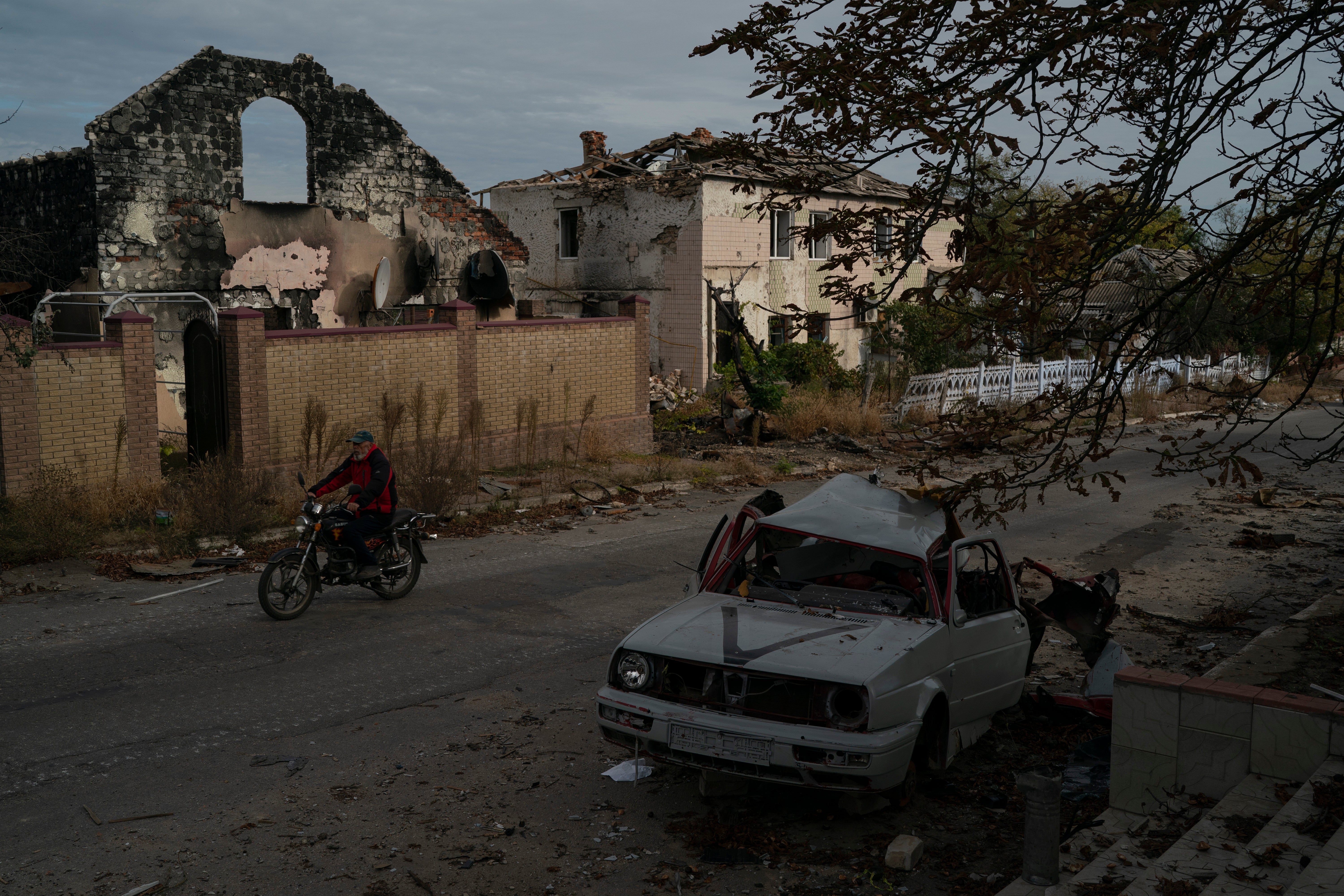EXPLAINER: Power cuts raise risk at Ukraine nuclear plant
A Ukrainian nuclear power plant that has been surrounded by Russian forces lost power when a Russian missile damaged a distant electrical substation — increasing the risk of a radiation disaster

Your support helps us to tell the story
From reproductive rights to climate change to Big Tech, The Independent is on the ground when the story is developing. Whether it's investigating the financials of Elon Musk's pro-Trump PAC or producing our latest documentary, 'The A Word', which shines a light on the American women fighting for reproductive rights, we know how important it is to parse out the facts from the messaging.
At such a critical moment in US history, we need reporters on the ground. Your donation allows us to keep sending journalists to speak to both sides of the story.
The Independent is trusted by Americans across the entire political spectrum. And unlike many other quality news outlets, we choose not to lock Americans out of our reporting and analysis with paywalls. We believe quality journalism should be available to everyone, paid for by those who can afford it.
Your support makes all the difference.A Ukrainian nuclear power plant that has been surrounded by Russian forces lost power Wednesday morning when a Russian missile damaged a distant electrical substation, increasing the risk of radiation disaster, according to the plant's operator.
The power to Zaporizhzhia Nuclear Power Plant was restored about eight hours later, the International Atomic Energy Agency said. But experts say the outage — the second one in five days — shows just how precarious the situation at Europe's largest nuclear plant is. They say repeated power outages over short periods of time are only making the problem worse.
Here's a look at the risks:
DISASTER DANGER
Fears of a nuclear catastrophe have been at the forefront since Russian troops occupied the plant during the early days of the war. Continued fighting between Russian and Ukrainian forces — as well as the tense supply situation at the plant — have raised the specter of a disaster.
Ukrainian authorities decided several weeks ago to power down the last reactor to reduce the risk of a catastrophe like the one at Chernobyl in 1986, where a reactor exploded and blew deadly radiation across a large vast area.
But the reactor core and used nuclear fuel must still be cooled for lengthy periods to prevent them overheating and triggering dangerous meltdowns like the ones that occurred in 2011 when a tsunami hit the Fukushima plant in Japan.
IODINE SUPPLIES
Some European countries are trying to prepare for the worst and started stockpiling iodine tablets to help protect their populations from possible radioactive fallout.
In others, like Germany, authorities have calculated there is a low risk that radiation levels harmful to human health would reach their territory.
In the event of a disaster, the biggest risk outside Ukraine could be to Russia, “depending on which way the wind blows,” said Paul Dorfman, a nuclear expert at the University of Sussex in England.
“The main deposit is likely to be in Ukraine and or Russia, but there could be significant radiation pollution in Central Europe, which is why countries around Ukraine are now thinking very seriously about issuing stable potassium iodide tablets,” he said.
LIMITED POWER SUPPLY
The Zaporizhzhia plant has been receiving external power to ensure the important task of cooling the reactor and spent nuclear fuel can continue, but the connections are at constant risk of disruption due to the conflict.
As power lines and substations have been damaged in fighting, Ukraine’s nuclear operator Energoatom has been forced to repeatedly rely on diesel generators. These generators, which have enough fuel for at least 10 days, have kicked into action when external power has failed — but experts say their repeated use over a short period of time increases the risk of a disaster.
“There are several redundancies and the facilities are now repeatedly on the last one,” said Mareike Rueffer, head of the nuclear safety department at Germany’s Office for the Safety of Nuclear Waste Management.
“Having to repeatedly fall back on diesel generators also limits the room for maneuver,” she added. “In that moment there’s no further backup and this is a high-risk technology.”
The diesel generators kicked in immediately Wednesday when electricity from the missile-damaged substation was cut. External power from the transmission line was restored hours later.
ONGOING RISK
Shutting down the plant’s last reactor several weeks ago significantly reduced the risk of a radiation disaster by gradually increasing the time it would take for a meltdown to occur. But if cooling fails due to a complete loss of power, meltdowns would still happen eventually, said Rueffer.
Dorfman said that in the worst case, Ukraine could see a situation similar to what happened in Fukushima.
“You’d see a heating of the high level spent fuel ponds. You’d see a hydrogen explosion, as we saw in Fukushima,” he told The Associated Press. "And then you’d see a significant radiation release.”
___
Associated Press writer David Keyton contributed from Stockholm.